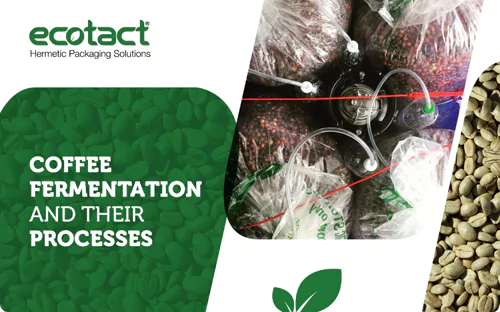Being a key global market, the coffee industry has been giving livelihood to millions of people for decades. This industry is spread in many regions across the globe but majorly in the coffee belt. These coffee belt regions include parts of Central & South America, Africa, and Asia. However, despite constant growth and popularity, the industry faces significant challenges for various reasons. One of the causes of these challenges is political tensions in regions like the Red Sea area that affect the stability of the coffee & cocoa trade. But the most crucial reason that has a major impact on the coffee industry is climatic change! Such factors showcase nothing but an urgent need to find impactful solutions that can safeguard the future of the coffee world across the globe.
A recent study says that by 2050 cultivation areas might be reduced by up to 50% considering the drastic high temperatures. Moreover, extended dry seasons cause a lack of water that leads to premature cherry development and low cup quality. Fluctuating weather causes the spread of pests and also causes several diseases. By understanding the causes and impact thoroughly, it is critical to find a comprehensive way to combat climate change. As an industry, we must look into impactful solutions that promote sustainability for the long term, contribute to the environment, and most essentially prevent the negative impacts of climate change, globally! Let’s deep dive into this:
Discovering Solutions Against Negative Impacts of Climatic Changes
Certain efficient and innovative practices and solutions must be adopted globally to control the climatic effects. Such as:
Moving to Higher Elevations
One efficient way to combat climate change is moving the coffee farms to higher altitudes. But why really? Well, the areas with higher cultivation regions offer lower and cooler temperatures which are perfect for coffee cultivation. While requiring some upfront costs, this surely helps in improving the quality of crops for the long term.
Agroforestry Practices
Agroforestry is a combination of trees and shrubs with crops and agricultural farming, on a particular land. This drafts an ecosystem that has environmental, economic, and social benefits. To bring it into the coffee industry, farmers generally plant shade trees among coffee plants. This not only promotes biodiversity but also attracts insects that are beneficial for the coffee beans. Additionally, the shade trees also protect the coffee beans against extreme weather conditions.
Hermetic Packaging
Hermetic packaging essentially creates an airtight environment safeguarding the content from various disastrous factors such as external gases and climate change. It keeps the quality of coffee beans intact and extends their shelf life. Today across the globe, looking at the constantly changing climatic conditions, hermetic packaging has become a pivotal part of the storage and transportation process. However, it is important to pick the right kind of hermetic packaging that provides all the benefits for your green coffee beans, cacao beans, and any other grains. That’s where Ecotact comes in!
Ecotact: The Best Solution for Hermetic Packaging
Re-defining food storage and eco-friendly green coffee bags around the world, Ecotact offers impactful hermetic packaging solutions. Our 100% recyclable and reusable Ecotact bags are expertly designed to shield green coffee beans, cacao beans, and other grains from any adverse effects on the climate. Furthermore, our reusable and sustainable materials provide robust, dependable, and long-lasting eco-friendly packaging.
Embrace sustainable coffee storage with Ecotact hermetic packaging. Visit Ecotact to learn more about the products and how they can help protect the quality of your coffee beans.
 English
English
 Spanish
Spanish French
French


